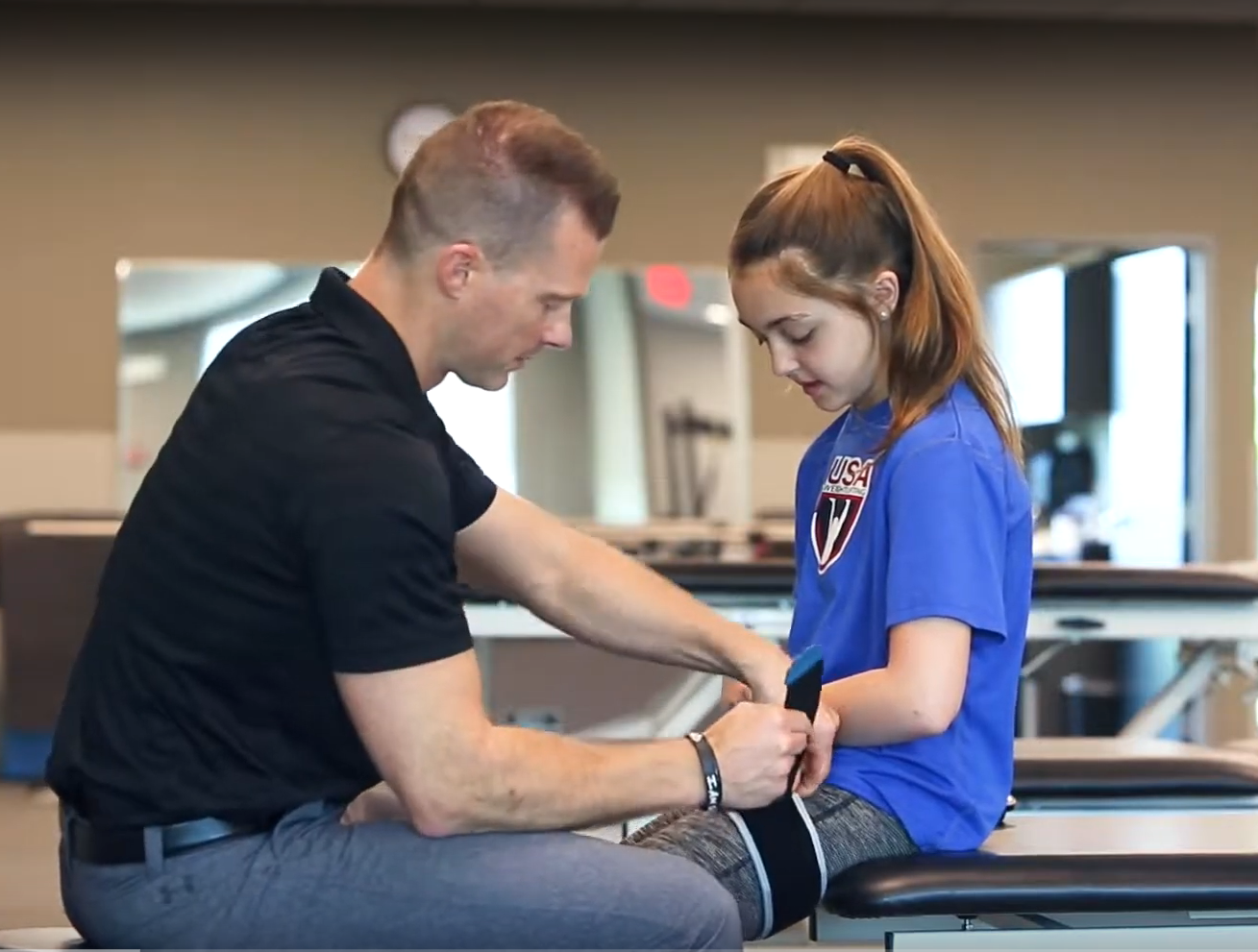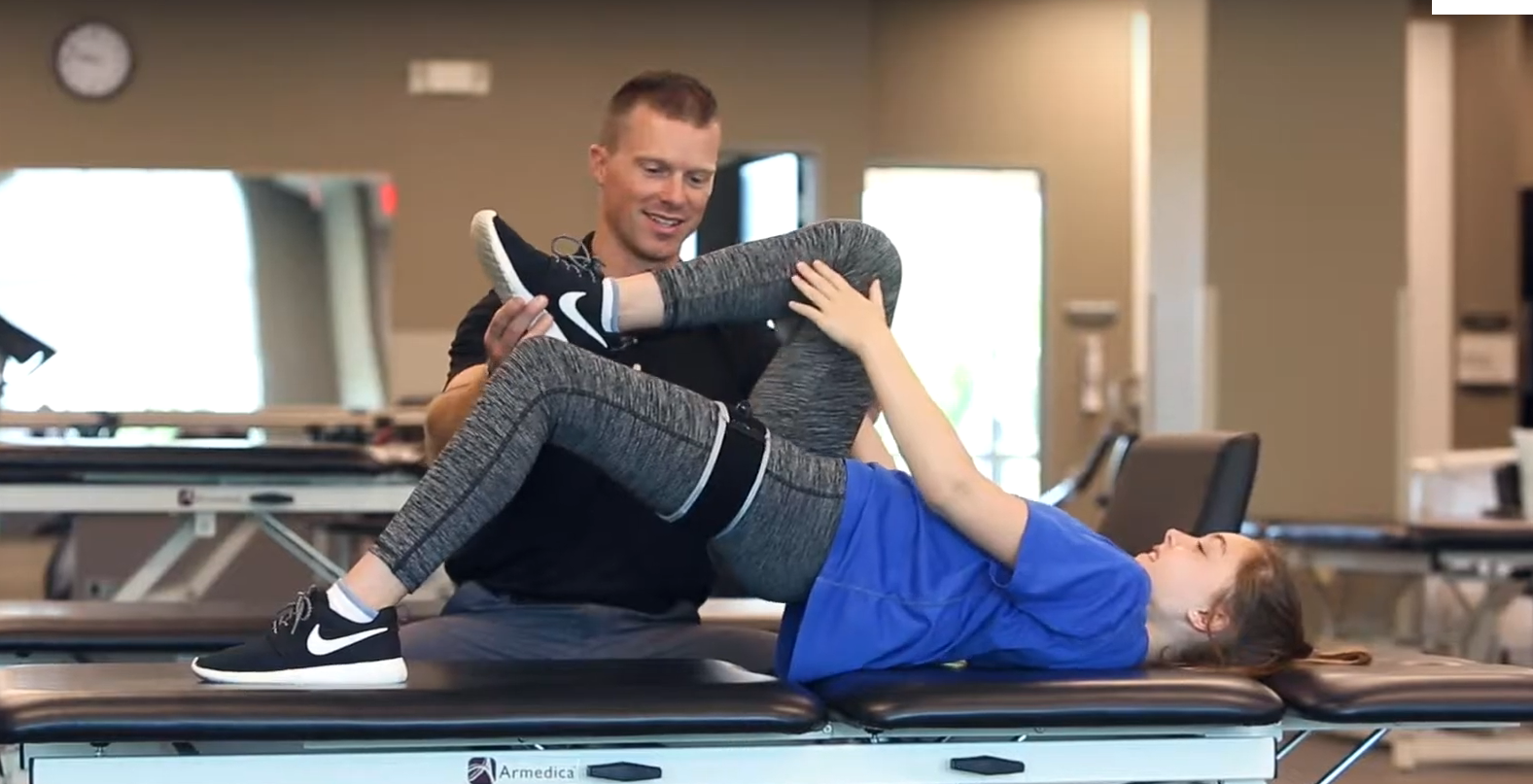Everyone is asking the same question. Blood Flow Restriction Training - Is it safe? Because it doesn't sound like a safe thing to do. I know that was my first thought and number one concern. I mean, limiting blood flow to an area of the body? How can that be a good thing? Let's jump into the most common questions and concerns:
By far the most often asked question:
Is it safe to cut off blood flow?
- Actually, No...but with BFR Training you are not actually fully cutting off blood flow. In fact, the most important element of BFR training is to never occlude the flow of blood into the limb (via the arteries). You are occluding the blood flow out of the limb (via the veins); however, when your muscles pump, the venous blood can be pushed past the restriction of the BFR band (if the band has elastic properties) and continue to provide some level of circulation to the exercising limb.
So, can I just use any strap or band?
- Ultimately, no - there are several elements that need to be considered with regards to safety when choosing a BFR band
- Elastic versus non-elastic
- Narrow versus Wide
- Pneumatic versus Non-Pneumatic
Elastic vs. Non-elastic:
- There are elastic materials like resistance bands or elastic wraps
- There are non-elastic materials like nylon straps or cuffs
- Elastic devices have properties that “give” (or stretch) when force is applied to them
- Non-elastic devices don’t stretch, when force is applied to them
Narrow vs. Wide
- For all the BFR products on the market there is a range of widths from 1 inch to 10 inches
- The wider the belt/band/cuff, the less pressure or force it takes to occlude the arterial blood inflow into an extremity
- Wider cuffs (up to 18 cm) have shown increased heart rate, increased blood pressure, greater perceived effort and higher ratings of pain - when compared with narrow cuffs (as low as 3.0 cm) when inflated to the same restrictive pressure
- Also important to note: wider cuffs transmit pressure to a moving limb differently than narrow cuffs
- Narrow bands, however, can be limited in their ability to adequately restrict blood flow, as well as may be more likely to involve nerve compromise
Pneumatic versus Non-Pneumatic
- Basically, can you control the amount of force applied to the band? Pneumatic means air inflating the device. Without this input, you cannot control the amount of restriction you are applying to monitor from session to session. More restriction is NOT shown to be better or more effective! However, some level of effectiveness is tied to amount of restriction, so without a pneumatic device, you can never know how much you are restricting your blood flow.
What are the risks?
Most commonly, no side effects are experienced with BFR training differently than traditional exercise. A study by (Nakajima et al., 2006 & Yasuda et al., 2017) found:
"Symptoms such as dizziness, subcutaneous hemorrhage and numbness" as the primary findings, but "there were no serious side effects (pulmonary embolism, paralysis by nerve compression, rhabdomyolysis, venous thrombosis, or pulmonary infarction)."
In other words, this study concluded that with "proper training leaders and instructors can achieve beneficial effects without serious side effects."
Safety (what elements make BFR safe):
| What we DON'T want | What we DO want |
| We DON'T want to fully occlude arterial inflow to an extremity | We DO want to impede venous outflow |
| We DON'T want to damage muscle, vessels, nerves or other tissues | We DO want to be able to control the amount of restriction |
| We DON'T want to cause pain or discomfort to the patient/client | We DO want to allow muscles to contract and exercises to be unhindered |
Ultimately, we want to set up a mismatch between enough blood getting to the muscles so they can meet the needs of sustaining work, but limit the blood flow the muscle can get to create a disturbance...but do so safely. Ideally, it would be nice to design a BFR product so that it can be used anywhere, anytime, by anyone. It would be even better it that device were affordable.
So, can we accomplish all of these things?
- Development of pneumatic bands for precise control of pressure
- Designed for intermediate width to distribute the force, but cover as little muscle as possible, thus being comfortable to wear and not blocking the function of the activities being completed
- Provision of elasticity to allow for muscular expansion and swelling while maintaining restriction, but still allowing some level of blood flow
- Ideally it wouldn't interfere with any activity or sport
B STRONG’s design has been engineered to address all of these elements. It incorporates a pneumatic inner layer of inflatable chambers that can evenly distribute the pressure across each chamber - The compressibility of which provides the elasticity to allow some level of "give", making full occlusion extremely difficult to virtually impossible. The adjustable outer layer allows accommodation in size (Cross Sectional Area - CSA) of the limb. Having all of these elements allows B STRONG to achieve appropriate, safe, comfortable and versatile options for blood flow restriction training.
So, what are the primary contraindications (reasons to withhold treatment due to the harm that it might cause)? In other words, what conditions or situations would limit one's ability to use BFR Training?
It has been suggested that persons not utilize BFR with these circumstances:
- Cardiac disease
- Active cancer
- Pregnancy
- Have a history of deep-vein thrombosis (blood clots)
- Unregulated/uncontrolled high blood pressure
- Systemic lymphedema
While not "contraindicated", caution should also be used with those who have Peripheral Vascular Disease or Peripheral Neuropathy, too.
While all of these considerations are HIGHLY valued to ensure safety and proceed at the highest level of caution, there are several studies showing effectiveness and safe utilization of BFR in several of these "at risk" populations. When in doubt, consult medical professionals on an individual basis!
Another common question I am often asked:

It is only safe if it is FDA "approved"?
The short and overwhelming answer to this is, NO!
I will attempt to BRIEFLY elaborate:
- First, the VAST majority of the research (and virtually all of the cited publications on safety) are NOT using FDA "approved" systems/units
- As far as the FDA “approval”, let me elaborate
- As long as a device meets the pre-existing criteria (thus already deemed safe) and has been determined to be basically equivalent to another legally marketed device, the device is already “approved”…no additional safety, effectiveness or testing is therefore required
- If a company is using an already “approved” device, they qualify for a 510K exemption and only needs to “list” their product with the FDA
- An example of a type of product meeting pre-existing criteria would be that of a Class I device - The FDA places their medial devices into classes:
- Class I (lowest risk)
- Class I
- Class III (highest risk)
- Class I devices – are deemed to have low potential for harm to the user. Most of these devices are exempt from pre-market review, including pneumatic tourniquets. Furthermore, if a pneumatic tourniquet is not used in surgery (like with its use for BFR), it considered an "off label" use
- Off label uses are perfectly acceptable to be implemented if a clinician feels it would be: "Potentially beneficial for the patient"
- So, as long as a device is used in the intended use of a legally marketed device and not modified to operate using a different scientific technology it does not need any additional pre-market approval (because a similar device has already been "approved")
- This means that any endorsement of a BFR device having FDA “approval” may be somewhat technically accurate, but mostly misleading
To summarize everything -
Since we are talking about safety in as many populations as possible, stopping blood flow to a limb for some additional potential benefit is not currently advised. While some research is developing that supports full occlusion for a brief period of time, it is NOT shown to be more effective than utilization of BFR without full occlusion. Furthermore, evidence show similar effects from lower levels of restriction, so the ability to fully occlude arterial flow and then back off to an arbitrary percentage of limb occlusion provides no additional benefit or safety measures.
Lastly, we have all understood for a long time now that pooling of blood in the body comes with risk. Gaining a training effect from potentially riskier practice does not make sense...especially since limiting blood flow to tap into the body's natural systems of response to exercise/stress/recovery can happen without fully occluding blood. After all, the primary emphasis is muscular fatigue at lower forces and demands while minimizing risk...this remains the most important element.
Disclaimer:
I am a certified trainer, instructor & ambassador of BStrong BFR Training Systems
References
Safety
-
- T. Nakajima, M. Kurano, H. Iida, H. Takano, H. Oonuma, T. Morita, K. Meguro, Y. Sato, T. Nagata (2006). Use and safety of KAATSU training: Results of a national survey. (2008) International Journal of KAATSU Training Research, 2(1):5-13
- Yasuda T, Meguro M, Sato Y, Nakajima T (2017). Use and safety of KAATSU training: Results of a national survey. International Journal of KAATSU Training Research, 13: 1-9.
- Loenneke JP, Wilson JM, Wilson GJ, Pujol TJ, Bemben MG (2011). Potential safety issues with blood flow restriction training. Scandinavian Journal of Medicine & Science in Sports, August; 21(4):510-8.
- Clark, B. C., et al. (2011). Relative safety of 4 weeks of blood flow-restricted resistance exercise in young, healthy adults. Scandinavian Journal of Medicine & Science in Sports, 21(5), 653-662.
- Loenneke JP, Fahs CA, Rossow LM, et al. Effects of cuff width on arterial occlusion: implications for blood flow restricted exercise. European Journal of Applied Physiology. 2012;112(8):2903–12.
- https://www.fda.gov/
- Rossow LM, Fahs CA, Loenneke JP, et al. Cardiovascular and perceptual responses to blood-flow-restricted resistance exercise with differing restrictive cuffs. Clinical Physiological and Functional Imaging. 2012;32(5):331–7.
- Loenneke JP, Balapur A, Thrower AD, Barnes JT, Pujol TJ. The perceptual responses to occluded exercise. International Journal of Sports Medicine. 2011;32(3):181–184.
- Loenneke JP et al, Blood flow restriction pressure recommendations: a tale of two cuffs. Frontiers in Physiology. 2013; 4: 249.
-
Tanaka Y & Takarada Y. (2018). The impact of aerobic exercise training with vascularocclusion in patients with chronic heart failure ESC Heart Failure: March (5) 586–591.
-
Madarame H, Kurano M, Fukumura K, Fukuda T, Nakajima T. (2013). Haemostatic and inflammatory responses to blood flow-restricted exercise in patients with ischaemic heart disease: a pilot study. Clinical Physiology & Functional Imaging. Jan;33(1):11-7.
-
Neto GR, Novaes JS, Dias I, Brown A, Vianna J, Cirilo-Sousa MS (2017). Effects of resistance training with blood flow restriction on haemodynamics: a systematic review. Clinical Physiology & Functional Imaging Nov; 37(6):567-574.







Share:
Blood Flow Restriction - How it works
Blood Flow Restriction Effectiveness